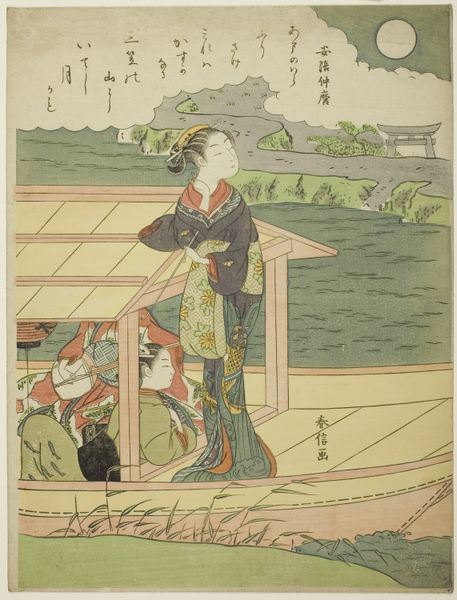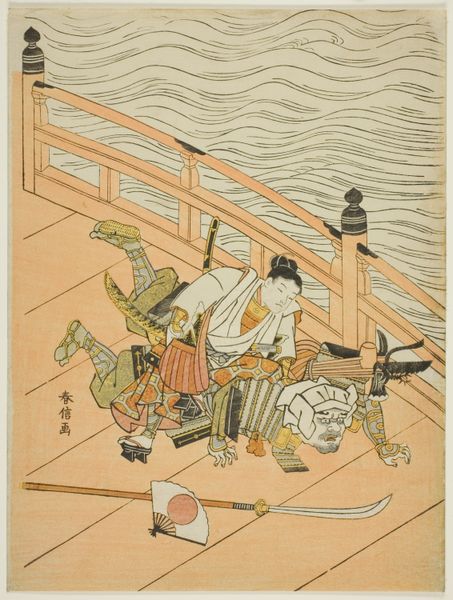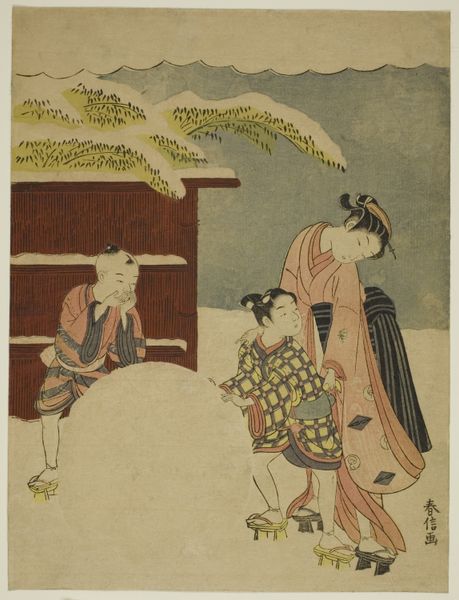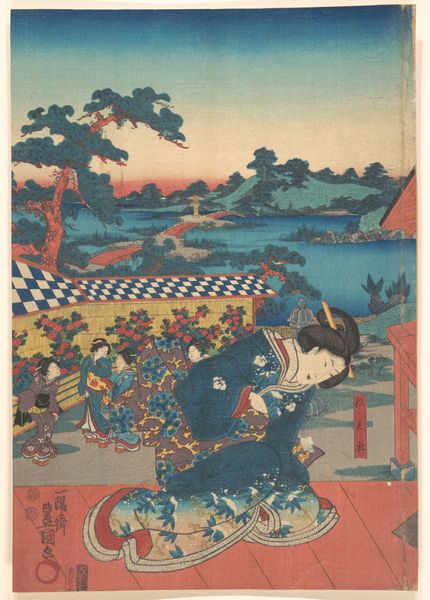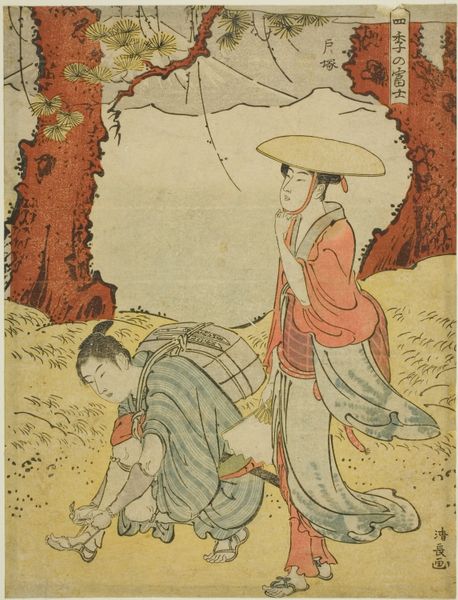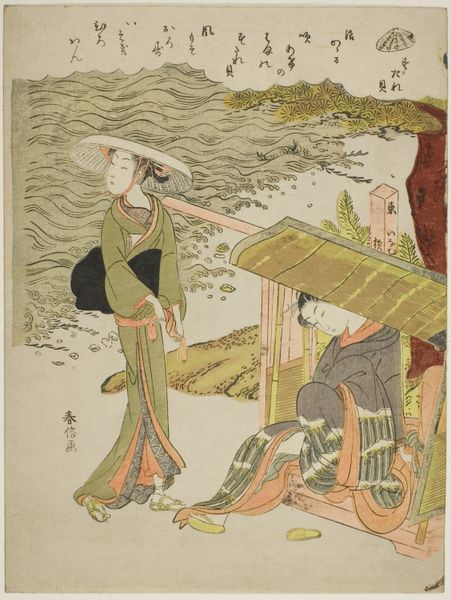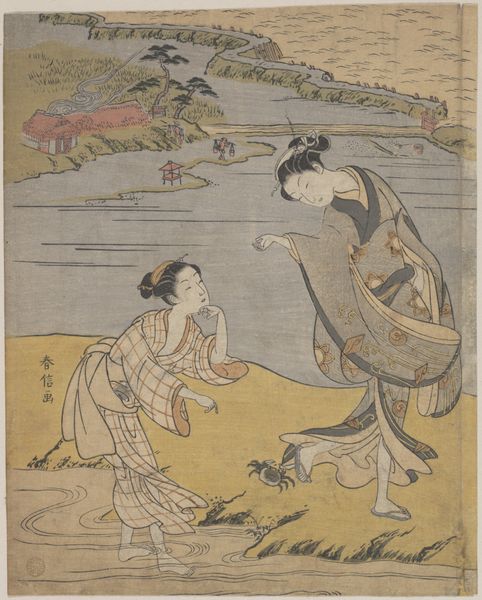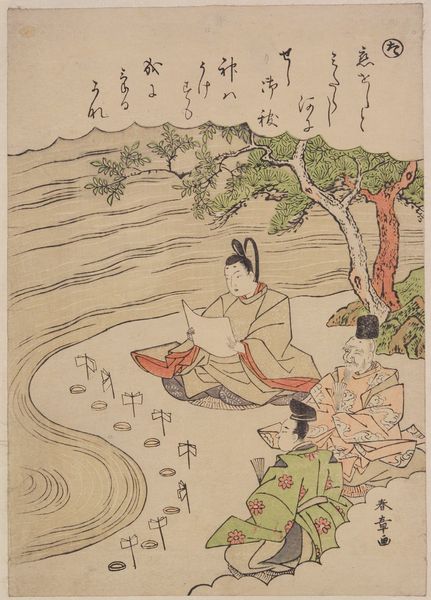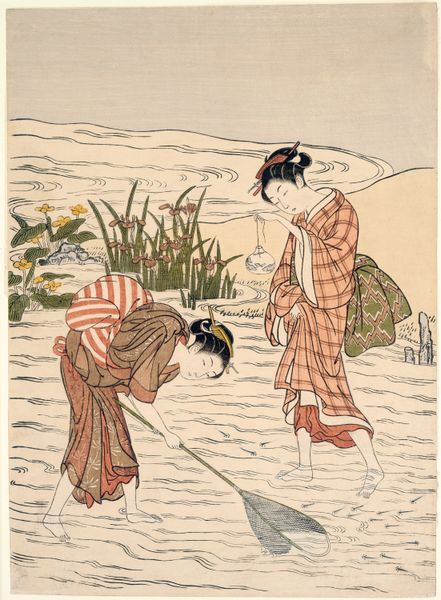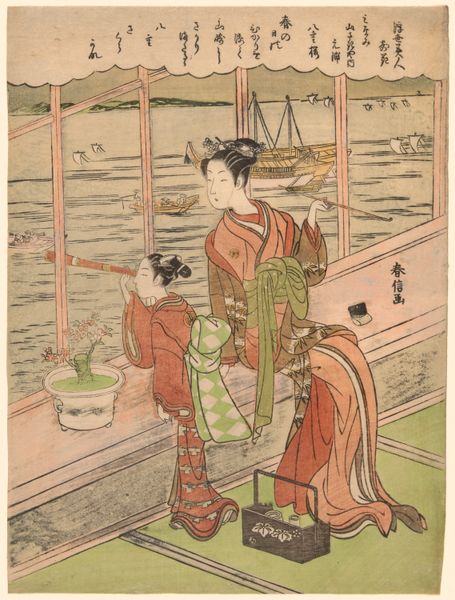
print, ink, woodblock-print
# print
#
asian-art
#
landscape
#
ukiyo-e
#
figuration
#
ink
#
woodblock-print
#
genre-painting
Dimensions: 11 × 8 3/8 in. (28 × 21.2 cm) (image, sheet, vertical chūban)
Copyright: Public Domain
Curator: Ah, I'm immediately drawn in by the dreamlike quality of this piece. It's a soothing image—a world momentarily paused. Editor: Indeed. This is Suzuki Harunobu’s “Woman Boarding a Boat,” a woodblock print created around 1767. Harunobu was a master of the ukiyo-e genre, meaning “pictures of the floating world." These images offer a glimpse into the ephemeral beauty and pleasures of Edo-period Japan. Curator: Floating is the perfect word for it. The pastel palette combined with the soft, flowing lines gives a sense of lightness. It almost feels as if the woman is floating onto the boat rather than stepping. Is there more to the image? Editor: Definitely. Notice the intricate patterns on her kimono and obi, contrasted with the simpler attire of the figure waiting in the boat. This reflects the social hierarchies of the time. Furthermore, the presence of the parasol might signal not only her higher status but also an intention to conceal or protect herself from prying eyes, something that was typical in Japanese prints. Curator: Ah, protection. And water, symbolically associated with the unconscious and intuition… a potent blend. Ukiyo-e prints are famous for capturing idealized feminine beauty. Editor: They are, and it’s intriguing that Harunobu depicts these women in the context of leisure activities. They invite us into these everyday scenes and invite us to find symbolism in them. I am fascinated by the light pillar behind them, something so simple becoming profound. Curator: This particular artwork definitely leaves a lasting impression through such nuanced scenes. Editor: Precisely. We're left to ponder the destination and the stories contained in the silent interaction between the two women. It encapsulates a specific time with lingering appeal.
Comments
minneapolisinstituteofart almost 2 years ago
⋮
In 1765, Suzuki Harunobu designed the first full color prints, called nishiki-e or "brocade prints." In addition to carving the image in relief on the woodblocks, artisans also carved raised areas, called kento_, along the edge of the blocks.
Join the conversation
Join millions of artists and users on Artera today and experience the ultimate creative platform.


